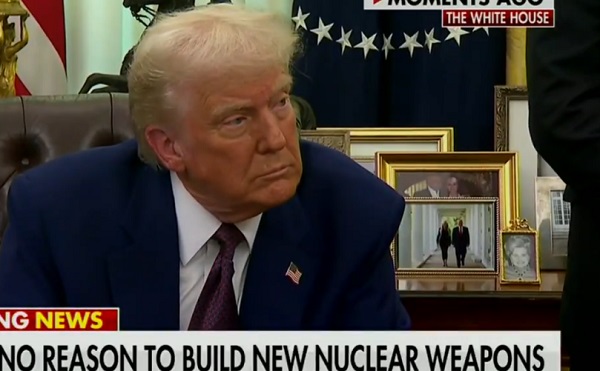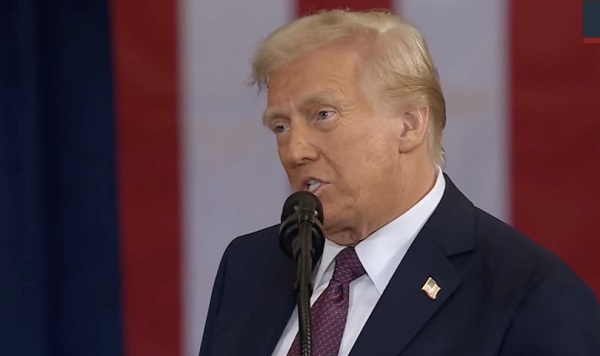illegal immigration
How to Lower the Risk of New Terror Strikes by Border-Crossing Islamist Extremists
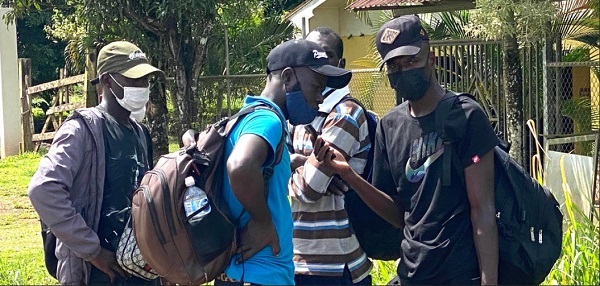
U.S.-bound Mauritanian migrants in Costa Rica near the Nicaraguan border. 2022 Photo by Todd Bensman.
From the Center for Immigration Studies
By Todd Bensman
So a border-crossing illegal immigrant has finally conducted a terror attack just as the FBI Director and the U.S. intelligence community has warned with increasing frequency would happen because of a 2021-2024 mass migration border crisis the New York Times recently concluded was the “largest in U.S. history”, fomented by policies of the Joe Biden administration.
Mauritanian national Sidi Mohammad Abdallahi, who illegally crossed the southern border during it in March 2023, entered the U.S. history books October 26 as the first to validate the long-hypothesized border terror infiltration threat with an attempt to massacre Jews and police in Chicago – as detailed in Part 1 and Part 2 of this “First Blood” series.
Now what? How might the incoming second administration of President Donald Trump reduce the threat of more such attacks with millions of foreign strangers already inside the United States and more constantly trying the southern land border?
Following are some remedies, starting with a highly viable one that comes from a most unexpected quarter, the Democratic administration of President Barack Obama and perhaps best frames where many solutions must aim: a category of illegal aliens the government has long termed “special interest aliens (SIAs)” or variations thereof, for hailing from countries where Islamist terrorist groups operate.
In June 2016, Obama’s DHS Secretary, Jeh Johnson, issued a three-page unclassified memorandum titled “Cross-Border Movement of Special Interest Aliens“. It ordered DHS border security and immigration agency directors to develop a concerted, whole-of-government initiative that would more robustly apply security vetting to SIA border-crossers and much more.

DHS Secretary Jeh Johnson’s 2016 Memo on Special Interest Aliens.
Since 2004 in the aftermath of 9/11, the U.S. Border Patrol and the US intelligence community came up with the SIA category tag to slap on apprehended illegal aliens who hailed from 35 mostly Muslim majority “countries of interest” where Islamist extremism and terrorist groups operated. Mauritania has long been on the intelligence community-created list, and Abdallahi therefore was an SIA.
The SIA tag didn’t mean the aliens were actual terrorists, of course, just that FBI or qualified intelligence officers would take a good, hard look at each to make sure they weren’t. To do that, agents endeavored to conduct intensive in-person interviews with them in detention centers, go through pocket trash and phones, and maybe check with amenable foreign intelligence agencies, looking for terrorism indicators that might weed out for deportation any who turned up as problematic.
Something related to “the increased global movement of SIAs” Johnson mentioned in the memo had clearly spooked him in 2016, perhaps the Muslim immigrants then pouring over European Union border in a mass migration surge, among them some who conducted attacks across the continent. (See: What Terrorist Migration Over European Borders Can Teach About American Border Security.) Perhaps he worried that the SIA security vetting program had fallen into dangerous disrepair a dozen years into it.
“As we all appreciate, SIAs may consist of those who are potential national security threats to our homeland”, the secretary wrote in the 2016 memo. “Thus the need for continued vigilance in this particular area.”
Whatever it was, the Johnson memo demanded the “immediate attention” of underlings to form a “multi-DHS Component ‘SIA Joint Action Group.’” The memo outlined plan objectives. Intelligence collection and analysis, Johnson wrote, would drive efforts to “counter the threats posed by the smuggling of SIAs.” Coordinated investigations would “bring down organizations involved in the smuggling of SIAs into and within the United States”, he wrote.
Border and port of entry operations capacities would “help us identify and interdict SIAs of national security concern who attempt to enter the United States” and “evaluate our border and port of entry security posture to ensure our resources are appropriately aligned to address trends in the migration of SIAs.”
The Obama administration’s SIA initiative never fully developed before Donald Trump took office in January 2017 and was soon lost in the shuffle, even though the old unreformed SIA vetting program remained in place, its FBI interviewers supplemented by specially trained agents of a U.S. Customs and Border Patrol unit called Tactical Terrorism Response Teams (TTRTs) working ICE facilities.
But the Trump administration should resurrect the Johnson idea because an SIA action task force has never been needed more than now, both at the border and in the interior, with so many SIAs like Abdallahi now living inside the country with virtually no vetting beyond largely ineffective database biometrics checks before release.
A Counterterrorism Program Swamped to Oblivion
Johnson was considering the idea at a time when perhaps 3,000-4,000 SIAs per year were apprehended at the border on average. (See: Terrorist Infiltration Threat at the Southwest Border.)

But today, the SIA vetting program is all but nonexistent, swamped to oblivion by the epic Biden-era mass migration crisis that brought in tens of thousands of SIAs per year, including at least 400 \who were on the FBI’s terrorism watch list by the end of 2024. A majority are thought to have traveled from South American landing countries through the Colombia-Panama “Darien Gap” migration passage where enabling governments have facilitated northward passages by bus through to Nicaragua.
Under no circumstance could responsible agencies possibly interview and investigate more than a miniscule fraction of them. It is almost certain that Abdallahi did not undergo a face-to-face interview with a trained federal agent before he was released to go to Chicago.
Indeed, data leaked to the media shows that nearly 75,000 SIAs reached the southern border between October 2022 and August 2023. Another 30,000 SIAs entered in the following 15 months through February 2024, the Daily Caller reported. The Biden DHS responded by reducing the number of SIA countries from 35 to about 13 (still including Mauritania), another House Judiciary Subcommittee report said.
A Biden-era cell phone app-based parole scheme (CBP One) gave thousands more SIAs from two dozen of the countries permission to cross the border on legally questioned mass humanitarian parole with ineffective security vetting. (See: Thousands of ‘Special Interest Aliens’ Posing Potential National Security Risks Entering via CBP One App.) Among them were some Tajikistanis arrested in a multi-state FBI counterterrorism wiretap sting in three cities. (See: After Suspected Tajik Terrorist Arrests, Little-Known Biden Border Entry Program Demands Hard Focus.)
Far from able to interview these overwhelming thousands, every federal agent assigned to the border was so swamped that at least 99 illegal aliens who were on the terrorism watch list were accidentally released, an August 2024 House Judiciary Committee report said.
Key Recommendations
These facts present an argument for the incoming Trump administration’s DHS to follow through on Johnson’s idea to establish an aggressive SIA action task force that can quickly assess and oversee the resurrection of a more thorough, well-resourced vetting program at the land borders as other policies reduce overall migration flow to pre-Biden numbers. But that’s only a start to onboard other remedies that will reduce the current heightened risk from unvetted SIAs. Other high-priority solutions are as follows:
At the land borders
- Restore the list of SIA countries to prior lengths; prioritize and resource federal personnel to conduct enhanced in-person vetting inside detention centers with a goal of 100 percent while more emphatically exploiting and enhancing the capabilities of the National Vetting Center (NVC) to assist in detecting derogatory information. (President Trump originally established the NVC, which the Biden administration maintained.) Consider the use of state and local fusion center officers and analysts as trusted partners to conduct vetting in detention centers under section 103 (a)(10) of the Immigration and Nationality Act (INA), which allows the federal use of state and local police resources. Encourage a congressional oversight responsibility with annual reporting requirements to ensure the SIA counterterrorism enterprise at the borders remains impactful, updated, and appropriately resourced.
- Institute extended detention time and misdemeanor federal prosecution for illegal entry by SIAs and discourage any availability of bond-outs for SIAs; ensure that bed space availability is always commensurate with average SIA apprehension rates so that room is consistently available for detention times necessary for security screening, investigative efforts, court proceedings, or final removals.
In the U.S. interior
- Convene regional ICE task forces that will compile databases of SIAs released into the United States since January 2021 under Biden-era policies and parole programs and require them to undergo belated enhanced security screenings, to include interviews, that were not previously conducted when they were released. Officers would act on derogatory information from abroad but also any uncovered during U.S. residency.
- Prioritize and resource asylum fraud investigations of SIAs by empowering officers of the Fraud, Detection and National Security Directorate (FDNS) of U.S. Citizenship and Immigration Services (USCIS) to conduct forensic analyses of random samples of asylum claims by SIAs. Grant FDNS agents arrest and investigative referral authorities independent of any other agency, including ICE. Substantially increase FDNS investigative staff and train USCIS’s asylum officer corps to conduct national security vetting during the “credible fear” interview process in synchronicity with routine duties.
- Have the Attorney General direct U.S. Attorneys to accept and prioritize asylum fraud case prosecutions and referrals from the newly empowered FDNS officer corps, resolving Government Accountability Office reporting in recent years that shows U.S. Attorneys reject most asylum fraud referrals.
- Direct appropriate law enforcement agencies to investigate and prosecute U.S.-based individuals who encourage, induce, or directly fund the illegal cross-border smuggling of SIAs, for deterrent effect, under Section 274 (A)(1)(IV) of the Immigration and Nationality Act.
Abroad
- Fully collaborate with the new Panamanian government in its plan to close the Darien Gap, through which many SIAs travel, by funding highly deterring, large-scale foreign repatriation flights to home countries and local detention facilities as needed. Provide aircraft as necessary. Furthermore, require large-scale repatriation flight programs in Colombia and Costa Rica. Consider funding repatriation flights from Mexico. Apply diplomatic pressure as appropriate on recalcitrant home nations to accept the flights.
- Create a contingency plan to implement “offshore” asylum processing centers in countries of transit and origin, in conjunction with US-funded foreign air repatriation programs.
- Increase the number of American law enforcement screeners able to interview SIAs in detention facilities of Mexico, Honduras, Panama, Brazil, and other Latin American countries known for the staging and transit of SIAs.
- Direct and prioritize a surge of SIA smuggling investigations in Latin America by ICE Homeland Security Investigations (HSI); ensure more HSI units target SIA smuggling as a larger percentage of total crime categories in South America, Central America, and in Mexico.
- Use all tools of government power to ensure that the governments of Mexico, Guatemala, Belize, Ecuador, and (eventually) Cuba more robustly monitor, vet, audit, investigate, and prosecute corrupt practices within their consulates and embassies in countries of national security interest as a means to reduce wrongful issuances of visas.
Managing down the risks associated with SIA flows and detection of terrorism-minded immigrants within them, of course, gets easier when other deterrence policies reduce the overall numbers. Finding needles is easier when the haystacks are small.
illegal immigration
Trump signs executive order cutting off taxpayer-funded benefits for illegal aliens
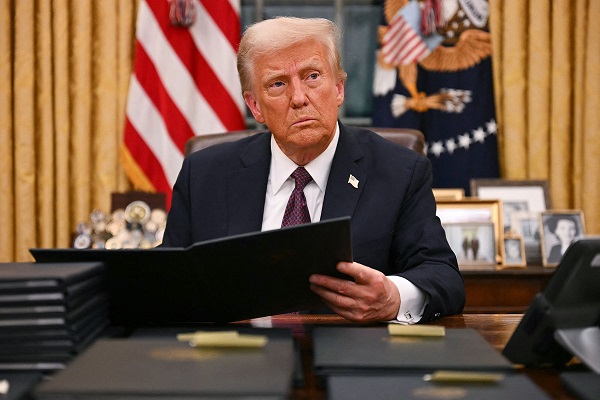
 MxM News
MxM News
Quick Hit:
President Donald Trump signed an executive order Wednesday night barring illegal immigrants from receiving federally funded benefits, a move he says will ensure taxpayer dollars are reserved for American citizens in need.
Key Details:
- The order directs federal agencies to identify and cut off benefits to illegal immigrants.
- Trump argues the Biden administration “undermined” federal law and improperly expanded benefits to non-citizens.
- The Department of Government Efficiency (DOGE), led by Elon Musk, is tasked with reviewing all federal funding sources for illegal aliens.
- The order mandates stricter eligibility verification systems and calls for improper payments to be referred to the DOJ and DHS.
Diving Deeper:
President Donald Trump took executive action Wednesday night to block illegal immigrants from receiving taxpayer-funded federal benefits, calling the move necessary to uphold the rule of law and protect resources for American citizens, including veterans and individuals with disabilities.
In signing the order, Trump pointed to the Personal Responsibility and Work Opportunity Reconciliation Act of 1996 (PRWORA), which was supposed to bar most illegal immigrants from accessing government benefits. However, he argued that multiple administrations—especially President Joe Biden’s—had worked to “undermine” these restrictions, effectively allowing taxpayer funds to support illegal immigration.
“The Biden administration repeatedly undercut the goals of that law, resulting in the improper expenditure of significant taxpayer resources,” Trump said. He further asserted that these benefits had acted as a “magnet” for illegal immigration, drawing more people across the border unlawfully.
The order directs the heads of all federal agencies to identify programs that currently allow illegal aliens to receive taxpayer-funded benefits and to take “all appropriate actions” to bring them in line with federal law. It also aims to prevent federal funds from subsidizing sanctuary policies, which shield illegal immigrants from deportation.
One of the most significant aspects of the order is the role of the Department of Government Efficiency (DOGE), a relatively new federal agency led by billionaire entrepreneur Elon Musk. DOGE is tasked with reviewing all sources of federal funding for illegal immigrants and recommending additional measures to align spending with Trump’s directive. Trump has praised Musk and DOGE for cutting through bureaucratic resistance to implement his policies.
Additionally, the order calls for enhanced eligibility verification systems to prevent illegal immigrants from obtaining benefits in the first place. Federal agencies are also required to refer any improper payments to the Department of Justice and the Department of Homeland Security for further action.
The move is the latest in Trump’s aggressive crackdown on illegal immigration, a central issue of his presidency and his 2024 re-election campaign. With a focus on border security, ending sanctuary policies, and tightening federal spending, Trump’s executive order represents yet another step in his administration’s effort to reverse the policies of his predecessor and enforce strict immigration laws.
Crime
Cartel threats against border agents include explosives, drones
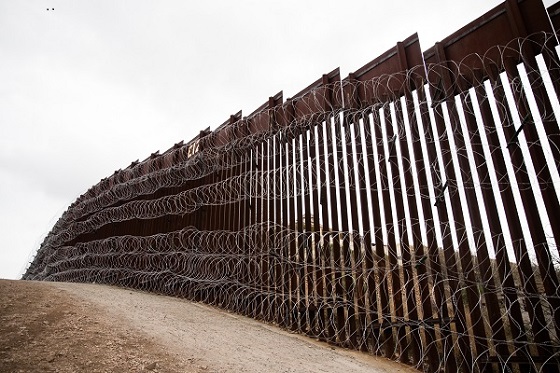
 MxM News
MxM News
Quick Hit:
Cartels are intensifying their threats against U.S. Border Patrol and ICE agents, employing increasingly sophisticated tactics, including drones, wireless tracking devices, and potential explosive attacks. As President Donald Trump strengthens border security measures, agents face growing dangers both at and beyond the southern border. Experts warn that these threats are an effort to counteract the administration’s immigration enforcement policies.
Key Details:
- Cartels are using drones and wireless tracking to monitor and potentially attack Border Patrol and ICE agents.
- The discovery of a security risk tied to body cameras has led CBP to suspend their use to prevent agents from being tracked.
- Leaks of ICE raids pose additional threats, increasing the risk of ambushes against agents conducting enforcement operations.
Diving Deeper:
Cartels along the U.S.-Mexico border are becoming more aggressive as President Trump enforces stricter immigration policies, with reports indicating that border agents are facing an escalating range of security threats. Fox News reports that Mexican cartels are leveraging new technology to track and potentially harm Customs and Border Protection (CBP) and Immigration and Customs Enforcement (ICE) agents.
Lora Ries, director of the Heritage Foundation’s Border Security and Immigration Center, emphasized that cartels are feeling the pressure from Trump’s border policies and are resorting to dangerous countermeasures. “The cartels are losing business. The encounters at the border are the lowest they’ve been in decades, and the cartels are not just going to give up that business quietly,” Ries told Fox News.
Among the threats agents face are drones used for surveillance, gunfire from across the border, and even the possibility of improvised explosive devices (IEDs). A recent internal memo warned that cartels might be planning to use snipers positioned in Mexico to attack U.S. agents. Additionally, agents are now vulnerable to tracking through wireless technology, prompting CBP to suspend the use of body-worn cameras after a social media post revealed they could be exploited via Bluetooth scanning apps.
The suspension of body cameras has raised concerns about increased false claims against border agents. Ries warned that “the number of claims of abuse are about to jump to exploit this lack of camera use,” underscoring the challenges agents will face without recorded footage of their encounters.
Beyond external threats from cartels, agents must also contend with internal security risks. Leaks about upcoming ICE raids have made enforcement operations more dangerous, potentially exposing agents to ambushes. Ries noted, “That subjects ICE agents to an ambush… Worse would be if aliens stay here and attack ICE agents, that is a risk.”
To counter these threats, border security experts stress the need for increased congressional funding to provide CBP and ICE agents with enhanced technology, equipment, and manpower. Ries urged lawmakers to act swiftly, stating, “Congress needs to hurry up” to ensure agents have the necessary resources to carry out Trump’s mass deportation efforts and secure the southern border.
As cartels escalate their tactics in response to Trump’s immigration policies, the safety of border agents remains a growing concern, highlighting the urgent need for stronger enforcement and security measures.
-

 Media2 days ago
Media2 days agoMatt Walsh: CBS pushes dangerous free speech narrative, suggests it led to the Holocaust
-

 Bruce Dowbiggin2 days ago
Bruce Dowbiggin2 days agoWith Carney On Horizon This Is No Time For Poilievre To Soften His Message
-

 COVID-192 days ago
COVID-192 days agoRed Deer Freedom Convoy protestor Pat King given 3 months of house arrest
-

 illegal immigration2 days ago
illegal immigration2 days agoTrump signs executive order cutting off taxpayer-funded benefits for illegal aliens
-

 Health2 days ago
Health2 days agoTrudeau government buys 500k bird flu vaccines to be ‘ready’ for potential ‘health threats’
-
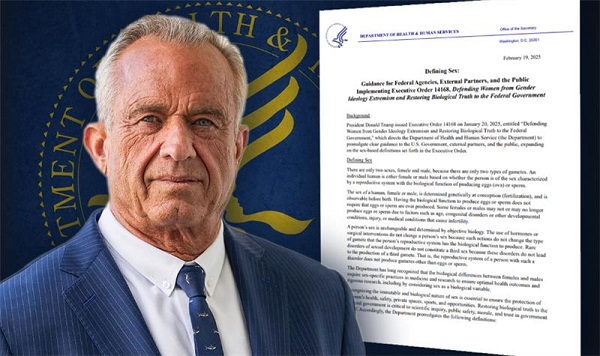
 Health1 day ago
Health1 day agoTrump HHS officially declares only two sexes: ‘Back to science and common sense’
-

 Business1 day ago
Business1 day agoGovernment debt burden increasing across Canada
-

 Business1 day ago
Business1 day agoNew climate plan simply hides the costs to Canadians





